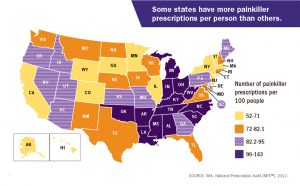 The Washington Post recently posted an update on the impending prosecution of an Oklahoma physician who allegedly over-prescribed painkillers and muscle relaxants to her patients, leading to unintended overdose.
The Washington Post recently posted an update on the impending prosecution of an Oklahoma physician who allegedly over-prescribed painkillers and muscle relaxants to her patients, leading to unintended overdose.
The “cocktail” of prescribed meds included hydrocodone, xanax, and Soma, a relative of Miltown, a tranquilizer that was widely abused in the 1960’s. The prescriptions she wrote were unusually large, lending themselves to abuse, or diversion to the street trade. Someone died.
As in all such cases, there’s the question of motivation. Was the physician ignorant of the risk– which is hard to believe in this day and age– or perhaps, just didn’t care? After all, there’s a lot of money to be made in selling painkillers. Old-fashioned greed has to be considered.
The Attorneys General in several states, including Oklahoma, are pushing criminal prosecutions. I don’t know about their chances of success, but they seem to think they can make the charges stick.
Still, there are plenty of defenders out there. Check the comments following the Post article. You’ll see where the push for more opioids came from: Chronic pain patients and the physicians who treat them. Big Pharma didn’t create that movement, they just exploited it. And the movement is still there.
In a sense, the current epidemic of abuse, addiction, and overdose is an unintended consequence of the pain movement. We were warned about such risks, but went ahead anyway. It reminds me of Warren Buffett’s complaint about pension funds that make too many high-risk investments. He explains the downside to audiences of policymakers who nod politely. But once he leaves, many go right ahead and pour more cash into hedge funds.
Anyway, individual states are taking different steps to stem the flow of painkillers. A close-to-home example includes this from New Mexico.
It’s an illustration of how a modest change in procedure– really not much more than a required check of a database when the doc initiates or extends an opioid prescription– can result in genuine improvement. There are still far too many opioid prescriptions written, if other developed nations are the standard. But in the absence of a centralized healthcare system, it’s probably the best we can hope for.










